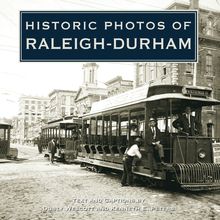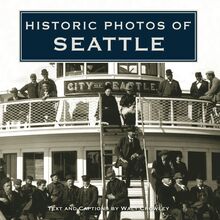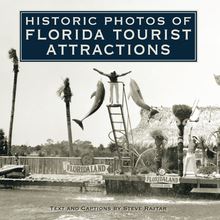Historic Photos of Brooklyn , livre ebook
123
pages
English
Ebooks
2008
Vous pourrez modifier la taille du texte de cet ouvrage
Obtenez un accès à la bibliothèque pour le consulter en ligne En savoir plus
Découvre YouScribe en t'inscrivant gratuitement
Découvre YouScribe en t'inscrivant gratuitement
123
pages
English
Ebooks
2008
Vous pourrez modifier la taille du texte de cet ouvrage
Obtenez un accès à la bibliothèque pour le consulter en ligne En savoir plus
Publié par
Date de parution
01 juillet 2008
Nombre de lectures
1
EAN13
9781618586070
Langue
English
Poids de l'ouvrage
17 Mo
Publié par
Date de parution
01 juillet 2008
Nombre de lectures
1
EAN13
9781618586070
Langue
English
Poids de l'ouvrage
17 Mo
HISTORIC PHOTOS OF
BROOKLYN
T EXT AND C APTIONS BY J OHN B. M ANBECK
This view of the Brooklyn Bridge, the eighth wonder of the [modern] world, from the Brooklyn side shows a steamboat passing under the span, with the ferry house and a firehouse at left.
HISTORIC PHOTOS OF
BROOKLYN
Turner Publishing Company
200 4th Avenue North Suite 950
Nashville, Tennessee 37219
(615) 255-2665
www.turnerpublishing.com
Historic Photos of Brooklyn
Copyright 2008 Turner Publishing Company
All rights reserved.
This book or any part thereof may not be reproduced or transmitted in any form or by any means, electronic or mechanical, including photocopying, recording, or by any information storage and retrieval system, without permission in writing from the publisher.
Library of Congress Control Number: 2007942095
ISBN: 978-1-59652-435-4
Printed in China
09 10 11 12 13 14 15 16-0 9 8 7 6 5 4 3 2
C ONTENTS
A CKNOWLEDGMENTS
P REFACE
B ROOKLYN I S A MERICA (1852-1899)
A N EW A GE (1900-1929)
B ROOKLYN S G LORY D AYS (1930-1949)
O N THE B RINK , O N THE R ISE (1950-1982)
N OTES ON THE P HOTOGRAPHS
As viewed from the roof of Brooklyn City Hall in 1891, the Kings County Court House is flanked by the Municipal Building at right and the Hall of Records at left. Both flanking buildings were demolished in 1926 for a new Municipal Building.
A CKNOWLEDGMENTS
With the exception of cropping images where needed and touching up imperfections that have accrued over time, no other changes have been made to the photographs in this volume. The caliber and clarity of many photographs are limited by the technology of the day and the ability of the photographer at the time they were made.
This volume, Historic Photos of Brooklyn , is the result of the cooperation and efforts of many individuals, organizations, and corporations. It is with great thanks that we acknowledge the valuable contribution of the following for their generous support:
Brooklyn Historical Society
Brooklyn Public Library-Brooklyn Collection
Kingsborough Historical Society
Library of Congress
New York State Archives
For assistance in researching photographs, I wish to thank Joy Holland of the Brooklyn Collection at the Brooklyn Public Library at Grand Army Plaza; Deborah Schwartz, president of the Brooklyn Historical Society; Julie May, photography archivist at the Brooklyn Historical Society; and Michael McCalip of Turner Publishing. In addition, we used the archives of the Library of Congress, New York State Archives, the archives of the Kingsborough Historical Society, my personal library of Brooklyn sources, and the Internet. My gratitude also goes to my favorite proofreader, Virginia B. Manbeck, who always had time to correct my syntax.
-John B. Manbeck
P REFACE
Brooklyn, a community analogous with Kings County since 1683. Brooklyn, an agrarian society until well into the twentieth century. Brooklyn, the peaceful western tip of Long Island, living in suburban solitude until the Brooklyn Bridge arrived. Brooklyn, a city unknown to the world until its raucous rebirth as a New York City borough. Brooklyn, discovered by millions as a welcome alternative to life somewhere else. Brooklyn, the magnetic attraction, the magical name.
Over the centuries, Brooklyn has drawn people for a magnitude of reasons. With land plentiful, Dutch settlers followed by British ones constructed manorial estates and settled on expansive farmland. The advent of the Industrial Revolution introduced enterprises such as printing, pottery, petroleum and refining, glassmaking, and iron foundries-collectively known as the black arts for the grime involved in the work-and international trade to the city s hospitable waterfront. As transportation improved, population growth and development altered remote sections of Brooklyn.
And the people! From embattled circumstances in other parts of the world, the self-possessed, opinionated Brooklyn character emerged, proud of his life yet provincial. He beckoned the intellectual. He became teacher and student, the musician and the listener. He delighted in the product of his old-world craft. He was the wise guy and the hick ; the prosperous and the homeless. Crossing the new bridges, he and others descended on Brooklyn bringing with them a new enlightenment. They not only participated in this open community existence, but put Brooklyn on the map.
They labored in the new industries; rode the new trolleys, elevated railways, and subways; participated in entertainment, from street games to theater to new amusements; cheered ethnic parades and parades for children. Their languages became Brooklyn argot. Symbols of their American lives spread far and wide: the Fulton ferry, the Brooklyn Bridge, Flatbush Avenue, Prospect Park, Pitkin Avenue, Coney Island. Their patriotism and religiosity translated into the American spirit.
And then the rug was pulled from under them. At the end of World War II, the essence of their lives disappeared. The Brooklyn Dodgers baseball team left, the Navy Yard closed, the economy weakened; people turned bitter, moved away. The camaraderie vanished. Times were tough.
But Brooklynites were tougher. Those who stayed re-created Brooklyn with new goals. Newcomers took the edge off the old Brooklyn image. Formerly neglected areas reconstituted the borough. Brooklyn rediscovered itself, and the world took heed. Again, outsiders crossed those bridges and repopulated the borough. Tourists-those befuddled strangers who appeared in Thomas Wolfe s short story Only the Dead Know Brooklyn -received welcomed greetings. Open-topped buses prowled the streets, culture beckoned, new buildings rose tall and proud.
And Brooklyn was rewarded with a new dignity and grace as visitors and transplants surged back to fill Brooklyn Heights, Park Slope, Williamsburg, Brighton Beach, Sunset Park, Bedford-Stuyvesant, Cobble Hill, Clinton Hill, Bay Ridge, Midwood, Red Hook, and on and on and on.
It s a good life, this Brooklyn.
In this book, you will see the varied lifestyles of Brooklynites through parts of two centuries. The disparity of lives and neighborhoods becomes noticeable when studying the pictures. Yet there is majesty in the architecture-in government buildings, department stores, private clubs, even within the entertainment section of Coney Island. The natural environment offered a boon to those who developed and expanded Brooklyn-the parks, the formerly gated communities, the waterfront.
Just as long-time residents demonstrated their individuality, individuals gravitated to Brooklyn. Designers of bridges and parks, inventors, entrepreneurs, politicians and statesmen, clerics-even scalawags-lived and absorbed the Brooklyn environment. Throughout this book, the images show how average and exceptional people lived their lives while giving to and taking from the borough. While they interacted with their neighborhoods, the external world affected them as well: the wars, worldwide and regional; economic developments such as the recession that forced the city of Brooklyn to merge with the city of New York; racial tensions; and the implementation of government policies such as the new city charter and the federal closings of the Navy Yard and the Naval Air Station.
While Brooklyn competed on equal grounds with the island across the East River, it was Manhattan that received the glamour and attention. Unlike the Bronx, Queens, or Staten Island, Brooklyn had its own governmental superstructure for 273 years. That foundation made Brooklyn a strong adversary. This distinction holds today, making the study of Brooklyn s history intriguing.
Enjoy Brooklyn!
-John B. Manbeck
Popular since opening day when 150,300 people walked across it, the Brooklyn Bridge remains a favorite for walkers and bicyclists.
B ROOKLYN I S A MERICA
(1852-1899)
By 1852, the early immigrants to the cities of New York and Brooklyn-Dutch, English, and German-had settled in established communities. Dutch colonial rulers had encouraged intellectual freedom, while the British had resigned themselves to the upstart American spirit of independence that in 1776 erupted into the Battle of Brooklyn cry for liberty.
Both Brooklyn and New York continued operation of what the Dutch had instituted: an international commercial mercantile port. Before the Civil War, much of New York s commerce included trade with southern states that supplied products for New York s textile industry. Slaves had worked on Brooklyn s many farms and contributed to the transplanted Southern tradition of horse racing. New York State outlawed slavery in 1829.
During the Civil War, Brooklyn played a significant role, bolstering Union forces with its Navy Yard. The outspoken abolitionist Henry Ward Beecher, brother of the author Harriet Beecher Stowe, preached against slavery from his pulpit in the Church of the Pilgrims where President Abraham Lincoln once came to worship. The Brooklyn poet and editor Walt Whitman served as a nurse in the war.
As the war ended, Brooklyn expanded, with multiple railroad lines extending north to south from the city proper to Coney Island. Farmland was transformed into communities, and communities into neighborhoods. Fueling the expansion was a growing mercantile sector along the banks of the East River, supervised by an elite corps of entrepreneurial barons. As unions pressed for a shorter work week, leisure activities and venues emerged: Prospect Park, racetracks, baseball parks, theaters. Even Buffalo Bill arrived in Brooklyn with his Wild West Show.
Surely, the success of Brooklyn, bolstered by the access promised by a new bridge under construction over the East River, prepared the way for Brooklyn s annexation by New York City. In 1883, the opening of the Brooklyn Bridge completed the connection, and the immigrant masses descended on Brooklyn from Manhattan. Up in the state capital of Albany, legislative wheels turned to move the concept of a Great














